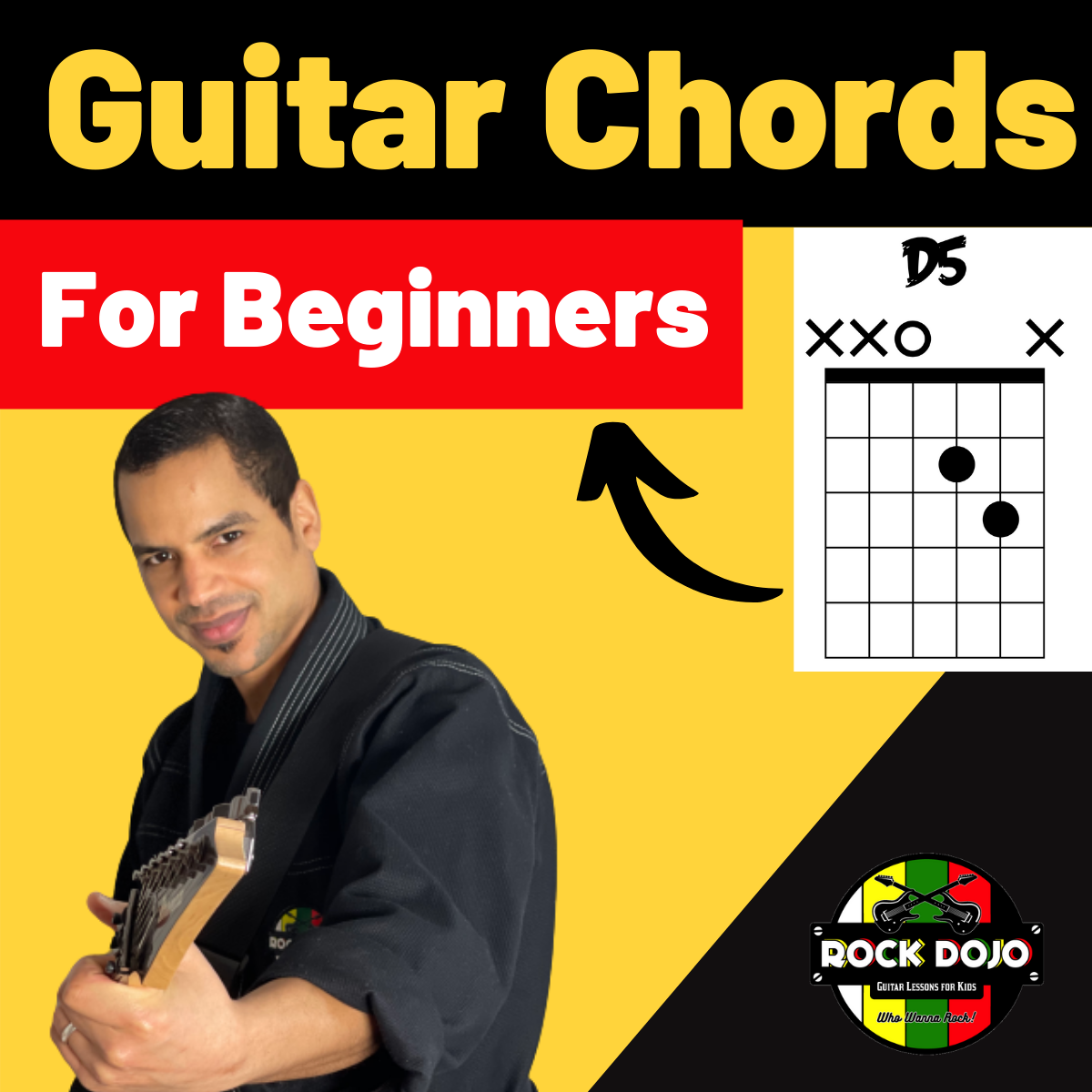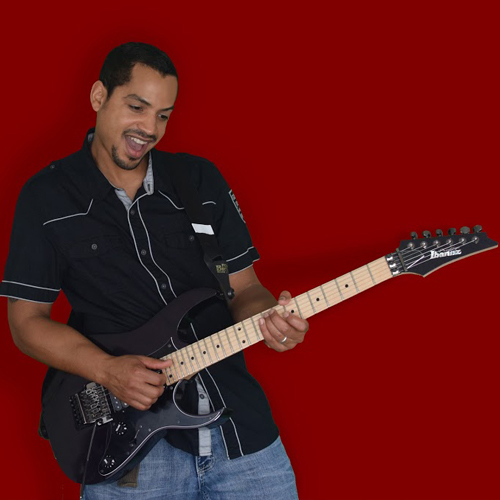What are the best beginner guitar chords for kids? Well, I’ll answer that question in this guitar lesson for kids. I’ll also provide you with some easy exercises to teach you how to practice guitar chords, and I’ll teach you one easy strum pattern for the guitar.
Finally, I have a free bonus for you if you stick around to the end of the video.
Hello and welcome to the Rock Dojo. My name is Brian Parham, and I’ll be your guitar sensei.
In this video, I’ll teach you the best beginner guitar chords for kids.
I taught these guitar chords to hundreds of students during my award-winning after-school guitar program for kids, and I am confident you’ll have these easy guitar chords for beginners under your fingertips by the end of this video.
The four chords we are going to learn are G, C, D, & A.
Guitar Chords for Beginners: Major vs. Minor
Before we dive in, let’s begin with a simple definition. A chord is two or more notes played on the guitar at the same time. A major chord contains three notes: the root, the third, and the fifth. In the key of A major, those notes are A, C#, and E.
On the other hand, the minor chord contains the root, the flatted third, and the fifth. In the key of A minor, the root, flat third, and fifth are A, C, & E.
Now that we defined major and minor chords let’s dive into your first chord.
What is a G Chord?
The G chord is a three-note chord made up of the notes G, B, & D.
You can play those notes in any order, and you would still be playing a G chord.
For example, the most common form of the G major chord is played in the open position like this. The from low to high are G, B, D, G, B, & G.
Easy G Major Chord
Now, that you’ve seen G major chord in the open position, let me teach you the easy G major chord. Technically, it’s a G power chord, but it sounds nearly identical to the G major chord. Plus, the easy G chord sounds amazing on an electric guitar with distortion.
The notes in the easy G chord are G & D, which means it’s technically a power chord because the B note, or the third of the chord, is missing.
What is a D Chord?
The D chord is a three-note chord made up of the notes D, F#, & A.
Those notes don’t have to be in that order.
From low to high, the notes of the D major chord played in the open position are D, A, D, & F#, but it’s still a D chord.
To finger the D chord, place your pointer finger on the second fret of the G string.
Place your middle finger on the second fret of the high E string.
Place your ring finger on the third fret of the B string. Then, strum the D, G, B, and High E-Strings.
When you’re playing the D chord, be careful to avoid strumming the E & A strings.
The Easy D Major Chord
Now that you’ve seen the D major chord in the open position, it’s time to learn the easy D major chord. While the easy D chord is technically a power chord because it’s missing the third degree of the chord, or in this case, the note F#, it sounds very similar. Plus, it sounds great on the electric guitar played with distortion.
What is an A Major Chord?
The A Major Chord contains the notes A, C#, & E. The most common form of the A major chord is played in the open position like this. The from low to high, the notes are A, E, A, C#, & E.
The Easy A Major Chord
This is the easiest of all the chords to play. Place your pointer finger across the second fret of the D, G, and B-strings. Then strum from the open A-string all the way to the B-string and enjoy the sound of rock guitar heaven!
The C Major Chord
The C chord is a three-note chord made up of the notes C, E, & G.
You can play those notes in any order, and you would still be playing a C chord.
For example, the most common form of the Cmajor chord is played in the open position like this. The from low to high are C, E, G, C, & E
The Easy C Major Chord
Now that you’ve seen the C major chord in the open position, it’s time to learn the easy C Major chord. Technically speaking, this chord shape is called a Csus2 because we’re adding the D note on the third fret of the B-string, and we’re also removing the E note on the second fret of the D-string. That being said, you can think of it as the easy C major chord.
The notes in the easy C major chord are from low to high: C, G,& D.
The great thing about all these easy versions of guitar chords for beginners is they hand distortion really well. That means these are the perfect chord choices for kids who want to rock on the guitar. And in my opinion, they sound a lot better than the regular versions when played on an electric guitar with distortion.
How to Practice Guitar Chords
I’m going to show you how to switch between the chords in a second, but please hit the link button if you’re enjoying this video, and don’t forget to subscribe. It’s free, and you’ll never miss a lesson.
Now, let’s take our chords and practice switching between them by arranging them in the order of G, D, & A. Followed by G, D, & C.
Here’s what that will look and sound like:
|G | D | A | A |
|G | D | C | C |
Easy Strum Pattern for Guitar
This strum pattern is commonly called The Ultimate Strum Pattern because it’s so common in popular music. The ultimate strum pattern sounds awesome. It consists of the following strums: Down, Down Up, Up Down, Up. Once you master this strum pattern, you can apply it to hundreds of songs on the guitar.
FREE Mini-Guitar Course for Kids
Your child can get started playing the guitar with a free online guitar course for kids. During this free series of online guitar lessons for kids, I will teach your child how to hold the guitar, the parts of the guitar, easy riffs, open powers, and so much more! It’s 100% free. Simply sign up for the Rock Dojo newsletter to receive your free online guitar lessons for kids. You can cancel at any time.



